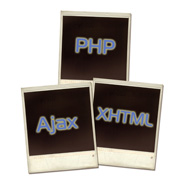Slide-Down Mega Drop-Down Menus with Ajax and jQuery

These looked like a cool and simple thing to reproduce, so I gave it a shot and came up with something that I think works pretty nicely.
It wasn’t as simple as I thought, and I don’t think my code is the greatest, so I’m open to suggestions. I think this could form the basis for a jQuery plugin but I’ve never created a jQuery plugin so holding I’m off on that for now.



 Last year I began a series called “Ajax From the Ground Up”, that consisted of two articles describing how to implement Ajax from scratch using pure JavaScript. Because I was busy with other things, and due to minimal interest shown in the articles, I never wrote the third part to the series.
Last year I began a series called “Ajax From the Ground Up”, that consisted of two articles describing how to implement Ajax from scratch using pure JavaScript. Because I was busy with other things, and due to minimal interest shown in the articles, I never wrote the third part to the series. Last week I posted a tutorial that demonstrated using a simple application how to implement
Last week I posted a tutorial that demonstrated using a simple application how to implement  If you’ve done your best to keep up with web development trends over the past five years or more, then it’s likely that you’re familiar with the concept of
If you’ve done your best to keep up with web development trends over the past five years or more, then it’s likely that you’re familiar with the concept of  This is the second tutorial in a series explaining how to implement Ajax “from the ground up”, so if you haven’t yet checked out the
This is the second tutorial in a series explaining how to implement Ajax “from the ground up”, so if you haven’t yet checked out the  It started out as an industry “buzzword” and has slowly progressed into one of the most important web technologies in use today. It is easily implemented using your favourite JavaScript framework. It can provide a beautiful layer of enhancement to many web applications, helping to improve page-load times and greatly improve the user experience. It can also degrade the user experience and cause a web application to fail if a particular client-side technology is unavailable.
It started out as an industry “buzzword” and has slowly progressed into one of the most important web technologies in use today. It is easily implemented using your favourite JavaScript framework. It can provide a beautiful layer of enhancement to many web applications, helping to improve page-load times and greatly improve the user experience. It can also degrade the user experience and cause a web application to fail if a particular client-side technology is unavailable.